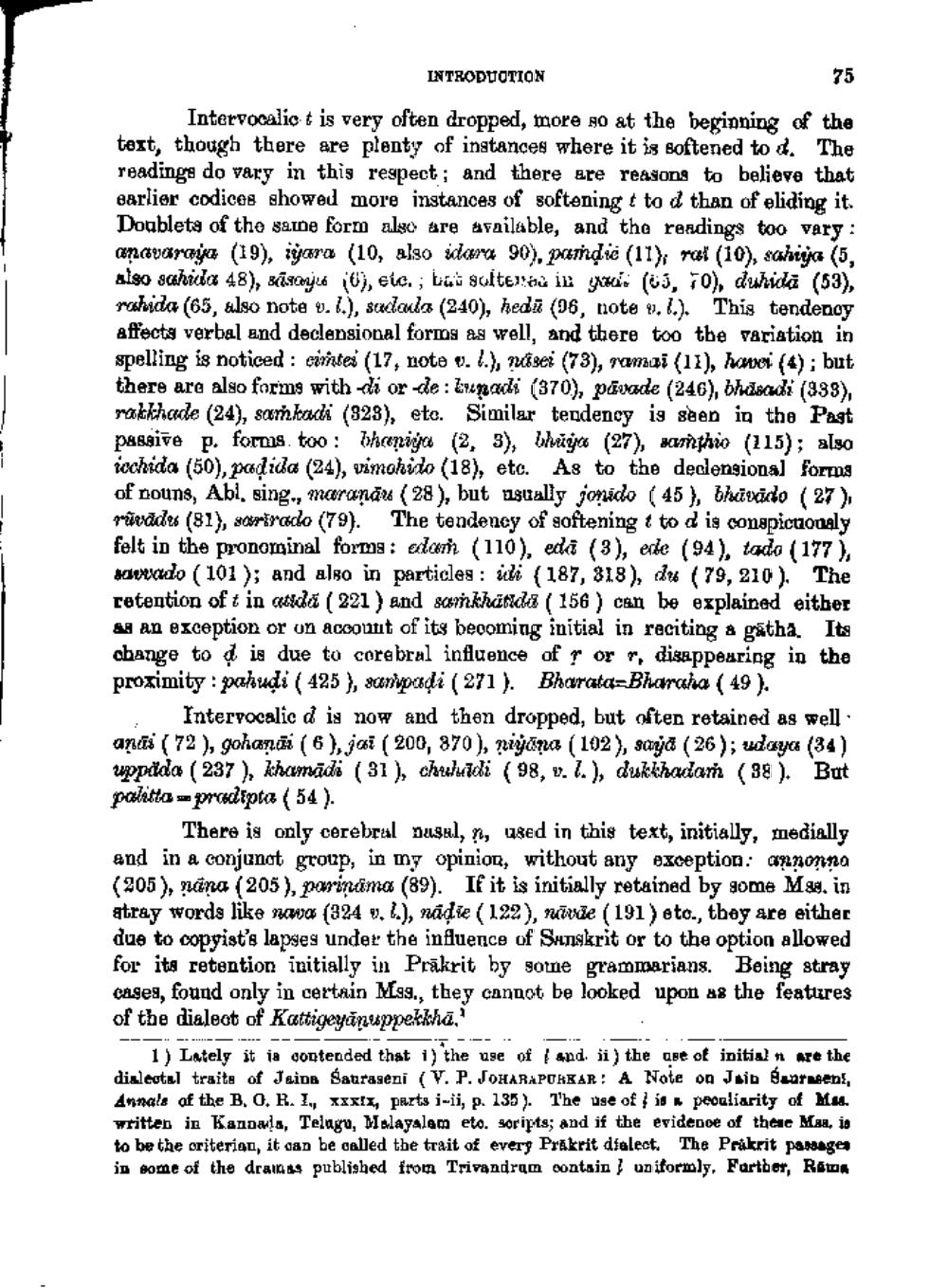________________
INTRODUOTION
75
Le
-
Intervocalict is very often dropped, more no at the beginning of the text, though there are plenty of instances where it is softened to. The readinge do vary in this respect; and there are reasons to believe that earlier codices showed more instances of softening to d than of eliding it. Doublets of the same form also are available, and the readings too vary : anavaraja (19), ijara (10, also idart 90). puandic (11): rol (10), sahija (5, also achida 48), sciscujua 0), cic. itrac sulted in to (03, 70), dwhida (53) ruhida (65, also note v. l.), sadaula (240), heda (96, note y. l.). This tendency affects verbal and declensional forms as well, and there too the variation in spelling is noticed: cimitex (17, note v. l.), nursei (73), rummui (11), how (4); but there are also forms with di orde: Ergas (370), punte (246), bhiodi (993). malkhade (24), sarkadi (923), etc. Similar tendency is seen in the Past pasaite p. forms. too : bhaniya (2, 3), Whãyc (27), samthio (115); also rochida (50), padida (24), vimohido (18), etc. As to the declensional forms of nouns, Abl. sing., maranas (28), but sually jonido ( 45 }, bhuixido (27), parāddes (81), sorirado (79). The tendency of softening i to d is conspicuomaly felt in the pronominal forms: com (110), edi (3), ede (94), tado (177),
aborado ( 101 ); and also in particles : ii (187, 818), du (79, 210). The retention of t in aulde ( 221 ) and samkharida ( 156 ) can be explained either
an exception or on acoount of its becoming initial in reciting a gatha. Its obange to d is due to corebral influence of ? or m, disappearing in the proximity : gaashudi ( 425 }, sanipadi ( 271 ). Bharata=Bharaha ( 49 ).
Interrocalic d is now and then dropped, but often retained as well anās ( 72 ), gohanzi ( 6 ), jai ( 200, 370), riyora (102), saja ( 26 ); udaya (34) uppáda ( 237 ), khamādi ( 31 ), chuluīdi (98, v.l.), dukkhadan (38). But politta - prodipta ( 54 ).
There is only cerebral musul, rt, used in this text, initially, medially and in a conjunot group, in my opinion, without any exception: annonna (205), ana (205), parintima (89). If it is initially retained by some May.in atray words like swa (324 v. l.), nadie (122), ruvide ( 191 ) eto., they are either due to copyist's lapses under the influence of Sunskrit or to the option allowed for its retention initially in Prākrit by some grammarians. Being stray cases, found only in certain Mas., they cannot be looked upon as the features of the dialeot of Kattigeyonuppekkha,
1) Lately it ia contended that 1) the use of land ii) the age of initia) Are the dialectal traits of Jaida Sauraseni (V. P. JOHARAPOKKAR! A Note on Jsib Barneens, Annals of the B.O.R..XXXIX, parts i-ii, p. 135). The use of is peculiarity of Mu. written in Kanows, Telugu, Malayalam eto. soripts; and if the evidence of thene Maa, is to be the oriterian, it can be called the trait of every Prakrit dialect. The Prakrit panager in some of the drainas published from Trivandram contain uniformly, Fartder, Rita




